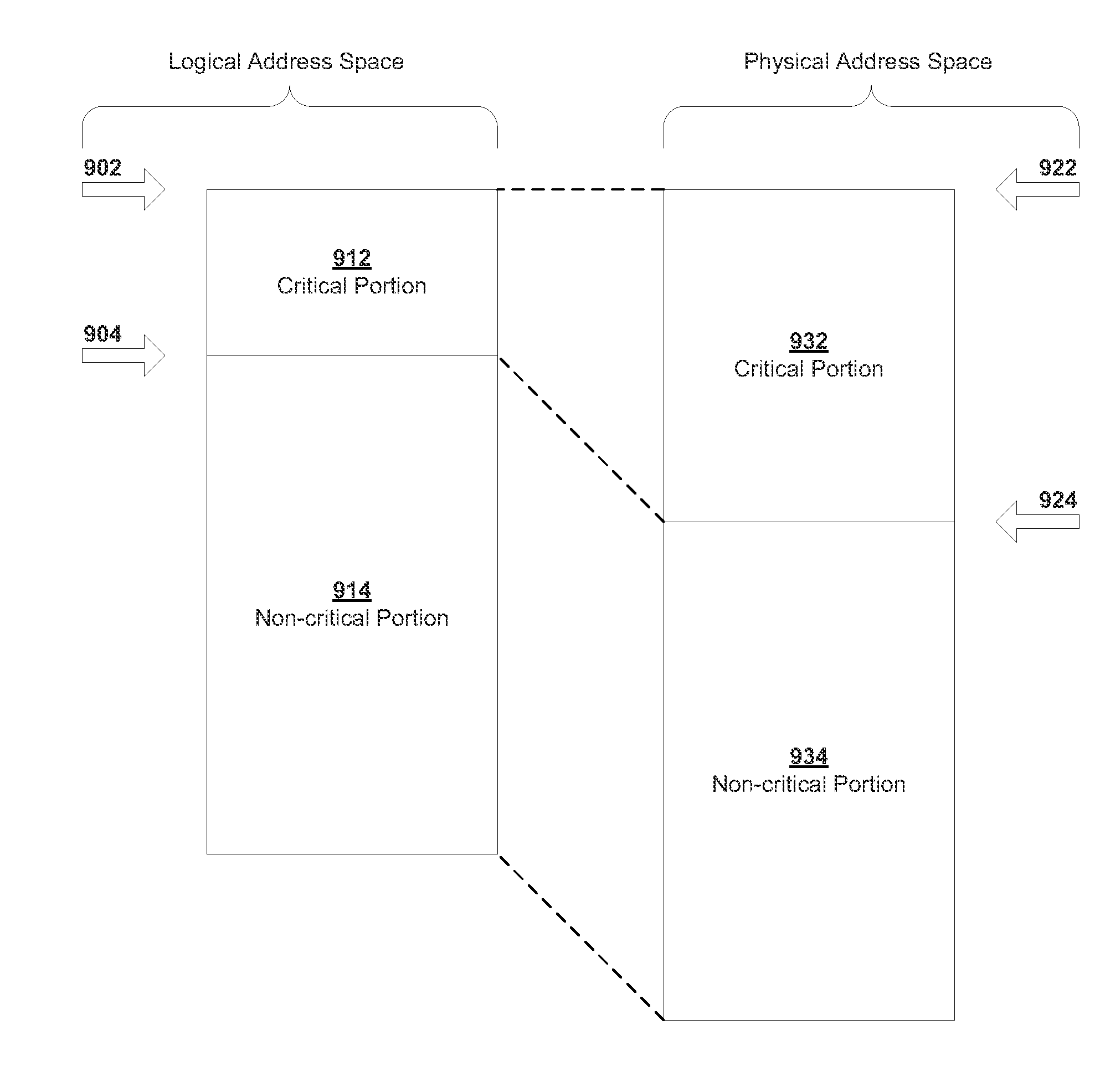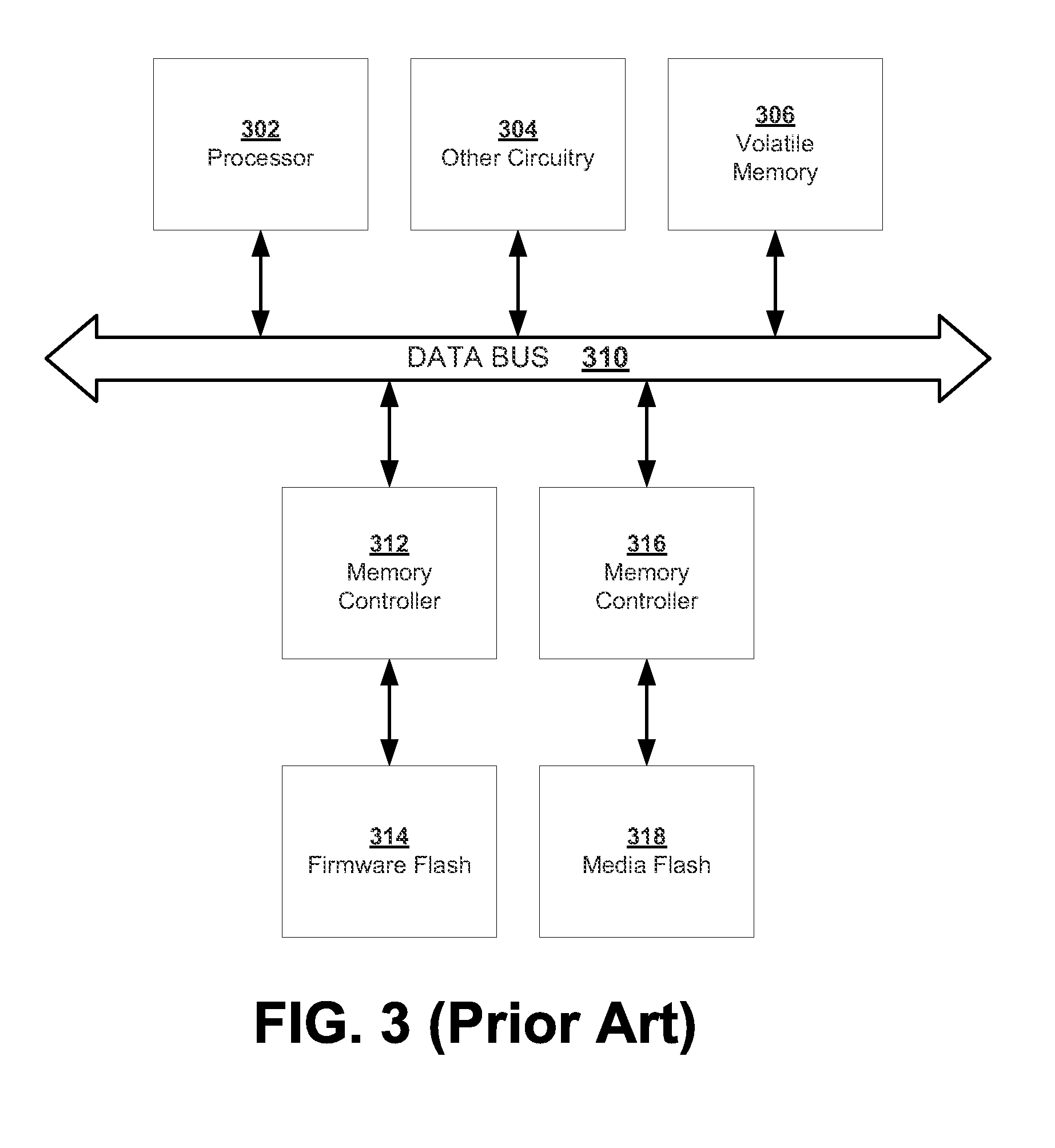Systems and methods for reliable multi-level cell flash storage
a multi-level cell and flash storage technology, applied in the field of flash memory, can solve the problems of unperceivable by the end user, unreliable, and unwanted transitions in the logical state of the cell,
- Summary
- Abstract
- Description
- Claims
- Application Information
AI Technical Summary
Benefits of technology
Problems solved by technology
Method used
Image
Examples
Embodiment Construction
A detailed description of embodiments of the present invention is presented below. While the disclosure will be described in connection with these drawings, there is no intent to limit it to the embodiment or embodiments disclosed herein. On the contrary, the intent is to cover all alternatives, modifications and equivalents included within the spirit and scope of the disclosure.
In an embodiment of the present invention, an MLC storage device is converted into high reliability storage by storing a single binary value to each cell in an MLC. The entire MLC storage device can be converted or a portion. In the former case, MLC memory could be more available or much cheaper than SLC memory so the MLC memory could be used in place of SLC memory. In the latter case an electronic device can be partitioned into a critical portion for storing critical data such as firmware and a non-critical portion for storing non-critical but potentially higher capacity data such as media.
In a preferred em...
PUM
 Login to View More
Login to View More Abstract
Description
Claims
Application Information
 Login to View More
Login to View More - R&D
- Intellectual Property
- Life Sciences
- Materials
- Tech Scout
- Unparalleled Data Quality
- Higher Quality Content
- 60% Fewer Hallucinations
Browse by: Latest US Patents, China's latest patents, Technical Efficacy Thesaurus, Application Domain, Technology Topic, Popular Technical Reports.
© 2025 PatSnap. All rights reserved.Legal|Privacy policy|Modern Slavery Act Transparency Statement|Sitemap|About US| Contact US: help@patsnap.com



